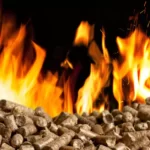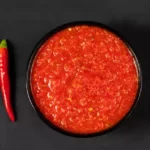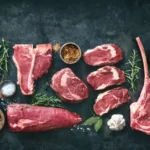A perfect barbeque isn’t complete without a perfectly smoked brisket. The tender, flavorful, and smoky taste of a well-smoked brisket can elevate any cookout. However, achieving the optimal result isn’t just about tossing the meat into the smoker; it requires meticulous attention to detail, especially when it comes to time management.
A 17 lb brisket will require more than an overnight smoke. For an outdoor culinary expedition like this, you might need to set aside up to 20 hours. This time frame allows the heat to slowly break down the fibers and connective tissues, leading to that desired melt-in-your-mouth tenderness.
While brisket smoking seems to be a long process, it’s worth the wait. That’s the beauty of barbecuing, particularly when it comes to smoking brisket. It’s an art that rewards patience and precision, resulting in an unmatched taste and texture that makes it an all-time favorite for many.
Understanding the Brisket Smoking Process
What Makes Brisket Unique?
Among different cuts of beef, brisket is distinctive due to its dense fibrous structure and significant fat marbling. It comes from the chest area of the cattle, a muscle section that receives extensive workout, which explains its toughness. However, when properly smoked, these properties transform into a succulent delight.
Basics of the Smoking Process
Smoking involves cooking food, particularly meat, over a low heat source for an extended period. The process is designed to cook the meat slowly, allowing the heat to penetrate deep into the brisket and break down tough fibers, resulting in tender and juicy meat. Moreover, the smoke infuses the meat with a unique flavor that’s hard to resist.
Factors Affecting Brisket Smoking Time
Size of the Brisket
In smoking, size matters. A larger brisket will naturally take more time to smoke than a smaller one. Given our focus on a 17 lb brisket, anticipate an extended smoking process.
Temperature of the Smoker
The smoker’s temperature is a significant factor affecting the duration of smoking. A standard rule of thumb is maintaining a temperature around 225 to 250 degrees Fahrenheit for smoking brisket.
The Impact of Weather Conditions
Surprisingly, external weather conditions can influence your smoking time. Cold or windy weather can affect your smoker’s temperature and, consequently, the cooking process.
Fat Content and Marbling
The amount of fat and marbling in a brisket also plays a role in the smoking process. Fattier and well-marbled briskets generally take longer to smoke as they require more time to render out the fat.
Estimating Smoking Time for a 17 Lb Brisket
Temperature and Time: The Essential Duo
When it comes to smoking brisket, a good rule of thumb is to allow 1.5 hours per pound at a temperature of 225 degrees Fahrenheit. Therefore, for a 17 lb brisket, you’re looking at approximately 25.5 hours. However, this is a rough estimate, as actual time may vary based on factors mentioned above.
Tips for Calculating the Perfect Smoke Time
- Start by weighing your brisket
- Choose the desired smoker temperature
- Multiply the weight of the brisket by 1.5 hours
Key Steps for Smoking a 17 Lb Brisket
Preparing the Brisket
Before you start, ensure your brisket is adequately trimmed. Apply a dry rub of your choice and let it rest to marinate.
Setting up the Smoker
Preheat your smoker to the desired temperature, ideally around 225 degrees Fahrenheit. Use good quality wood chips for a robust smoky flavor.
Checking the Temperature Regularly
Maintain a consistent temperature throughout the smoking process. Regularly check the smoker and meat temperature using a digital thermometer.
When and How to Wrap the Brisket
Around the 160 degrees Fahrenheit mark, your brisket might hit a temperature plateau, often referred to as “the stall”. This is a good time to wrap your brisket in aluminum foil or butcher paper to help it push through this stage.
Determining Brisket Doneness
Use of a Meat Thermometer
One of the most reliable methods to determine brisket doneness is by using a meat thermometer. The brisket is typically done when it reaches an internal temperature of around 200 degrees Fahrenheit.
The Fork or Toothpick Test
Another test involves using a fork or a toothpick. If it slides in and out of the meat with ease, it is a good sign that your brisket is done.
Visual and Touch Cues
The brisket should have a dark, almost black crust called the bark when it’s done. In terms of touch, the brisket should feel soft and jiggly.
Resting and Slicing Your Smoked Brisket
Why Resting Is Important?
Once your brisket reaches the desired internal temperature, remove it from the smoker and let it rest. Resting allows the juices to redistribute within the meat, contributing to a moist and flavorful brisket.
Techniques for Properly Slicing a Smoked Brisket
Always slice your brisket against the grain. This practice ensures that the meat slices are tender and easy to chew. Remember to slice only what you’re going to serve immediately to avoid drying out the meat.
Frequently Asked Questions
What If My Brisket Smokes Faster?
Sometimes, brisket may reach the desired internal temperature faster than estimated. In such cases, it’s crucial to rely on meat texture rather than the thermometer alone.
Can I Smoke a Brisket at a Higher Temperature?
Yes, it’s possible to smoke a brisket at higher temperatures, but it might affect the meat’s tenderness and moisture. It’s always recommended to smoke brisket slowly at low temperatures for the best result.
What To Do If the Brisket Is Not Tender?
If your brisket isn’t as tender as you’d like, it might not be cooked long enough. Allow it more time in the smoker to ensure the collagen breaks down adequately, resulting in a tender brisket.
Conclusion
Smoking a 17 lb brisket to perfection is a culinary adventure that requires patience, precision, and an appreciation for the process. It’s more than just a cooking technique; it’s a ritual that brings people together and celebrates the primal joy of food prepared over a smoky flame.
Remember, the estimated times are just guidelines. The actual smoking process might take a little less or more time depending on various factors. Embrace the process, manage your smoker’s temperature, and keep a close eye on the brisket’s internal temperature.
Above all, let your palate be the ultimate judge. A perfectly smoked brisket should offer a flavorful feast with every bite, leaving you and your guests eagerly awaiting the next barbeque gathering.







